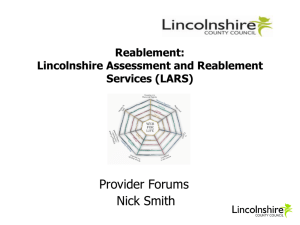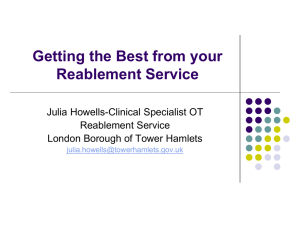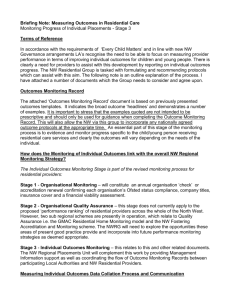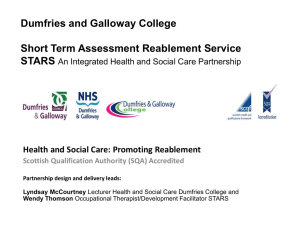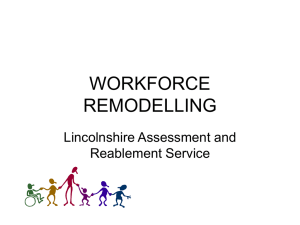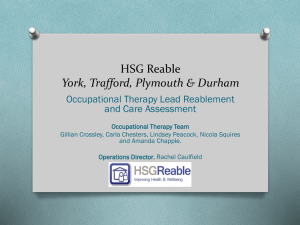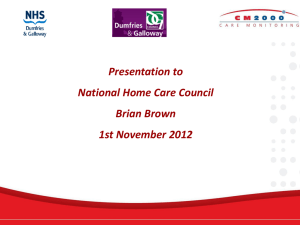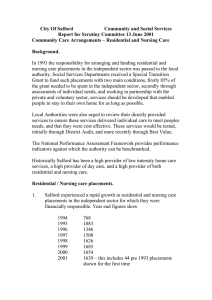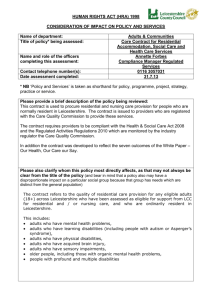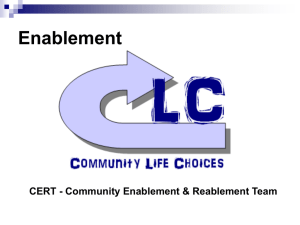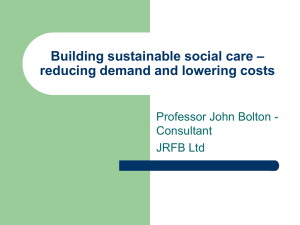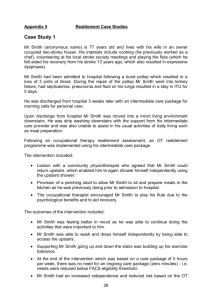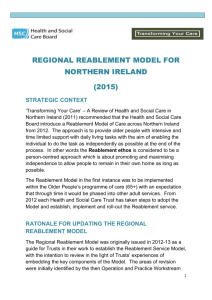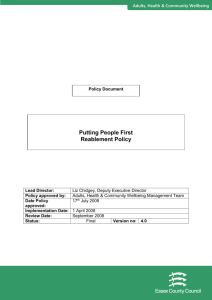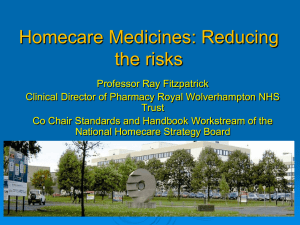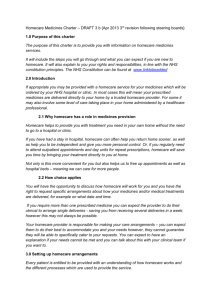Linda Sanders
advertisement
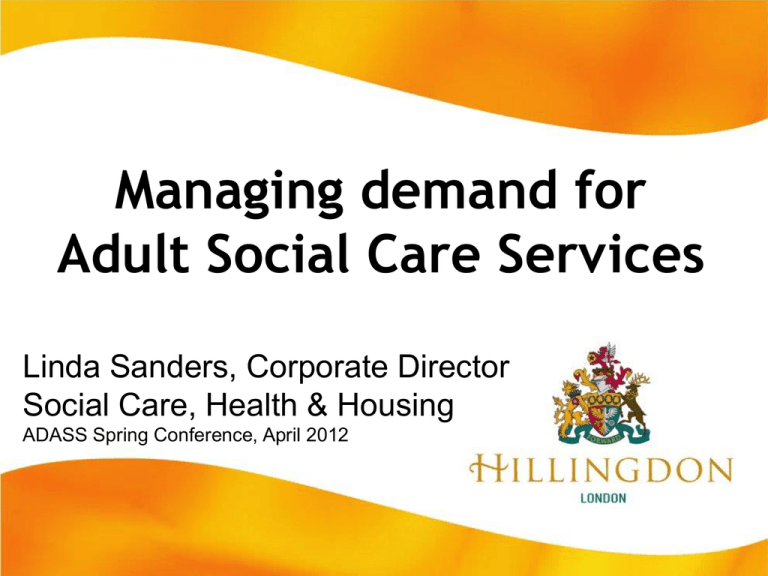
Managing demand for Adult Social Care Services Linda Sanders, Corporate Director Social Care, Health & Housing ADASS Spring Conference, April 2012 Strategy • To reduce the reliance on long-term residential/nursing placements, enabling people to remain living in their own homes rather than be placed in institutional care. • Enabled by effectively mainstreaming TeleCareLine and Reablement services, as part of transforming approach to social care. Transformation targets • 3000 new TCL users by the end of 2014/15. • Savings target of £8.5m by 2012/13. £4.7m delivered 2011/12 through Telecare, Reablement and reduced care home spend. • Comprehensive financial model created to develop and monitor targets. Anticipated impact of changing care model Combination of: • preventing/delaying entry into residential care • Preventing people needing on-going care • support confidence building during reablement process. LBH new customer pathway • All service users referred to homecare re-ablement initially – hospital discharge and community referrals. • TeleCareLine part of mainstream offer within Adult Social Care for all clients. • TeleCareLine free for over 85s, FACS eligible and first 6 weeks as part of a reablement package. • TeleCareLine available for self funders, charges from £1.13 to £12 per week. • In-house monitoring and installation team. • In-house mobile response service (out of hours) for service users without responders. Impact of change – 2011/12 • Reduction in long-term residential and nursing care placements from 8.08 per week in 2010 to 3.57 per week to end Feb 2012. • Reduction of 112 OPS placements from October 2010. • Residential/nursing placement headcount at its lowest since April 2008. • Reablement with Telecare has led to steady reduction in homecare hours purchased of 10% from April 2011 to date, forecast continued year-on-year reduction of 7.8%. • 1120 TeleCareLine installations against a target of 750 for 2011/12. Early indicators from TeleCareLine evaluation Detailed analysis of sample of new TeleCareLine service users during 2011: • 195 clients reviewed – all with enhanced package of support • 48% of cases are considered to be assisting in delaying the demand for further services • 10% have enabled a delay in residential care placements • 42% have facilitated a smaller homecare package. The recipe • Strong strategy and vision. • Clear internal process – infrastructure in place. • Efficient business processes - clearly communicated. • Ongoing PR/communications programme, focusing on all key stakeholders. • View internal workforce as key stakeholder – don’t just focus on residents and partners. “Hearts and minds” • Changing the way we engage with service users and the support we provide. • Staff and service users – key stakeholders, dedicated activity to engage both for success. Engagement with Health • Successful hospital discharge approach, with TeleCareLine being regularly referred. • Increased focus on TeleHealth through NHS Operating Plan, WSD and “3 million lives”. Got “everybody in the room” • Acute hospital • PCT • CCG • CNWLT – (Community Trust) Business case built around LTC • Initial action based around impact on LTC costs. • Introduced strategic direction towards a TeleHealthCare service, integrating Health and Social care approach. • “Out of hospital care” an increasing focus • Aligned with existing Integrated Care pilot. Lessons learned • Compelling case. • “Vision” is accepted and understood. • Has helped to forge links with NHS. • Hard to get coordinated action. • Will keep pushing! Thank you Any questions?
